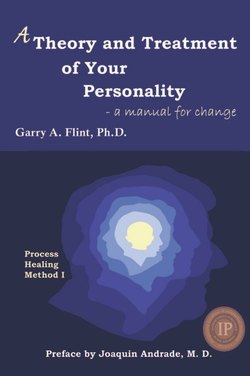Читать книгу A Theory and Treatment of Your Personality - Garry Flint - Страница 6
На сайте Литреса книга снята с продажи.
The Theoretical Basis for Process Healing
ОглавлениеAbout 13 years ago, I started thinking of the brain as a chaos process (Freeman, 1991) and wrote a paper describing the active ingredients of change when using EMDR (Flint, 1996, 2004). Since that time, this theory, described in greater detail later, has helped me establish rapport with my patients. I explain to patients that memories start forming shortly after conception, not after birth, which is the common opinion. All areas of the brain begin storing memories while the brain is developing. At some point, the brain starts developing responses to sensory stimulation. The auditory stimulation by words, phrases, and sentences that come through the mother’s body and stomach wall are remembered. By the time of birth, the fetus has many verbal memories, but no language.
After birth, learning continues with remembered verbal memories, but now neural representations of objects and actions are associated with the words. The memory of words associated with objects and actions becomes a functional language. This language, learned without sensory experience, becomes the subconscious. Because the subconscious has no sensory experience, he or she is able to “see” learned history and the internal dynamics of active memories. The subconscious can also control internal processes to cause changes in the experience of memories and behavior by treating the emotions associated with them.
At the same time as this language of the subconscious is developing, the Main Personality starts learning. The language learned by the Main Personality initially associates with internal and external sensory experience and, later, with pleasure and pain and basic needs. The subconscious and the Main Personality, therefore, learn two different neural representations related to the same experience. The subconscious learns without sensory experience and the personality learns with sensory experience and, later, with other properties.
Active memories are in the Active Experience, which is part of our Behavior System (see Figure 1-1). Before I make the distinction between conscious and unconscious active memory and dormant memory, I am going to tell you about dissociation. Because of the vast amount of information caused by active sensory experience and different memory activities, a process called dissociation is created. Dissociation reduces the quantity of information that we experience in our conscious experience. In Figure 1-1, the double lines shown crossing the Active Experience represent the dissociation process. The dissociative process causes all or part of a memory or sensory experience not to be experienced in our conscious experience and, therefore, creates the unconscious Active Experience. Unnecessary or painful parts of a memory can be “flagged” by the dissociative process in order to move the unwanted parts of a memory into the unconscious. These flagged memories are called “dissociated.” The activity of dissociated memories is in the unconscious experience and not the conscious experience.
Memories that are not part of the Active Experience are called dormant. While all dormant memories are by definition inactive, they are all potentially active — waiting to be triggered. They are ready to be switched or triggered into activity in the Active Experience. The terms memory activity or active memories used here always refer to those memories that are active in either the conscious or the unconscious Active Experience, or both. Memories that are available to be triggered are called dormant.
The subconscious has access to everything experienced in the brain in both the conscious and unconscious experience. The subconscious does not experience any form of hurt; in other words, trauma never damages the subconscious. Later, I will explain how I was able to hurt the subconscious by having the subconscious do something not normally done. Fortunately, I recognized the problem and was able to repair the subconscious. It is important to stress the fact that the subconscious appears to be always whole and healthy with no barriers to inhibit the view of the internal “reality.” When I talk to a patient about the formation of the personality, I explain the reasons why intense traumas cause amnesic parts. I explain that these parts are normal personality parts learned during the span of a trauma, but having few neural connections to the Main Personality. Amnesic parts also have executive function and can create novel adaptive behavior, while dissociative parts are more like skills and can only create adaptive behavior that was previously learned.
Patients often hear comments in their thoughts or experience a “Yes” feeling while I talk. This makes the model of the personality I am presenting true for them. However, in most cases, the subconscious will communicate in the first session by using finger responses, signaling “Yes,” “No,” “I don’t know,” “I don’t want to tell you,” or by making no finger response.
My Neurolinguistic Programming Training (NLP) (Rice and Caldwell, 1986) taught me about auto-treatment. Auto-Treatment is obvious when personality changes occur without any outside influence. One can teach an NLP intervention, called the six-step reframe (Cameron-Bandler, 1985), to treat issues at night while the patient sleeps. When this works, the patient asks to change beliefs or behaviors when he or she goes to bed and awakens with the change completed. After an experience with a certain patient, which impressed me with the power of the subconscious, I decided to extend the auto-treatment notion. Since then, I have found barriers to auto-treatment in other individuals. The subconscious can treat these barriers to enable it to treat issues automatically and to perform independently of the active personality.
